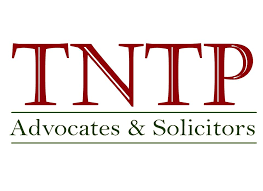The Covid-19 pandemic, which broke out at the beginning of 2020 and continued for a long time, has had a profound effect on the entire economy, causing negative impacts on the operations of businesses, and seriously affecting the ability to pay bills. corporate debt and leading to an increase in bad debts at credit institutions. To be able to minimize and prevent bad debt from increasing, it is extremely urgent to research and come up with solutions to prevent bad debt. In this article, we will analyze and suggest measures for credit institutions to prevent bad debt from happening.
1. What is bad debt?
Bad debt is understood as bad debt when the borrower is unable to pay the debt when it is due to be paid as committed in the credit contract. According to the definition of “bad debt” in Clause 8, Article 3 of Circular 11/2021/TT-NHNN stipulating the classification of assets, the level of deduction, the method of making provisions for risks and the use of provisions for settlement Risk management in operations of credit institutions, foreign bank branches, “Nonperforming loan (NPL) refers to a bad debt on the balance sheet which is classified into group 3, 4 or 5.”; in there,
Those with bad debt will be listed in the list of bad debt customers on the Vietnam National Credit Information Center CIC system. National Credit Information Centre
2. Measures for prevention of bad debt at credit institutions
Along with credit, work is the prevention of bad debt risks. In the past time, to prevent bad debt risks, credit institutions often apply the following main measures:
-
Implement appropriate credit policy:
Credit policy includes customer policy, credit size and limits policy, and interest rate policy. Develop and apply appropriate credit policies to help credit institutions enhance their specialization in credit analysis, create a common consistency in credit activities to limit risks, and improve profitability for credit institutions.
-
Improve the efficiency of credit appraisal, inspection, and supervision after credit granting:
This is to assess the feasibility of investment projects, production, and business plans, to serve the lives of customers who request loans, and at the same time to assess the customer’s ability to repay debts, contributing to minimizing credit risk. After granting credit, the credit institution shall periodically or irregularly check the loan’s use purposes, the situation of production and business activities, and the inventory turnover of customers to have appropriate solutions.
-
Credit rating and scoring for customers:
A credit rating and scoring system must be built suitable for each customer as a basis for credit granting approval and credit quality management. The credit rating and scoring for customers are done by methods: qualitative, quantitative, or combination. Among these methods, the qualitative method is superior because it reflects more accurately the status of customers and debts, which has been applied by many credit institutions.
-
Apply credit security measures:
The application of credit security measures with assets to prevent risks, create a second source of repayment for debts, and create an economic and legal basis to recover debts already lent to customers. In fact, in addition to small loans for life that are unsecured, most of the loans of credit institutions are fully or partially guaranteed.
-
Require customers to buy credit insurance:
Many credit institutions have applied this credit risk prevention measure in collaboration with insurance units in recent years. When taking this measure, the credit institution benefits from sharing the insurance premiums collected from customers according to the agreement with the insurer, and at the same time has a sure source of repayment when the customer is at risk. Accordingly, if the customer encounters problems such as unemployment, casualty, and no income to repay the debt, the insurance company will pay.
-
Setting up and using the risk reserve fund:
Currency trading is the riskiest business. Therefore, the establishment of a risk reserve fund is to protect depositors, help credit institutions preserve business capital, and create a strong foundation for credit institutions in their operations. Due to the loss of capital, the bank has to find a source of compensation. This source is taken from the hedging fund of the credit institution.
3. Legal services to support debt recovery of TNTP
With a team of experienced legal experts, TNTP is confident in assisting customers in recovering bad debts. With the motto of always protecting the legitimate rights and interests of the Clients, TNTP tries and ensures to support the Clients and deploy the work in the fastest, most timely, and most effective way, regularly reporting the progress of the case. work as well as giving the next action plan so that the Client can easily monitor and evaluate the work results. Clients can completely trust and feel secure when using TNTP’s debt collection support legal services.
Above is the article “Measures for prevention of bad debt at credit institutions”. We hope this article was useful to you.
Best regards,
- For additional information and the newest articles from TNTP and Associates International Law Firm, please join our Facebook Fanpages at:
- Please click on the following link to learn more about legal knowledge:
https://dsdc.com.vn/en/category/legal-newsletter/
- Please click on the following links to learn more about the legal services of TNTP and Associates International Law Firm:
- Dispute resolution services: https://dsdc.com.vn/en/the-dispute-resolution-services-from-tntp-law-firm/
- Legal consulting services: https://dsdc.com.vn/en/legal-consulting-services-from-tntp/
- Debt collection services: https://dsdc.com.vn/en/debt-collection-services-from-tntp/
- For additional information, please contact us at:
TNTP and Associates International Law Firm
Lawyer Nguyen Thanh Ha
Phone: 0931 798 818
Email: ha.nguyen@tntplaw.com








